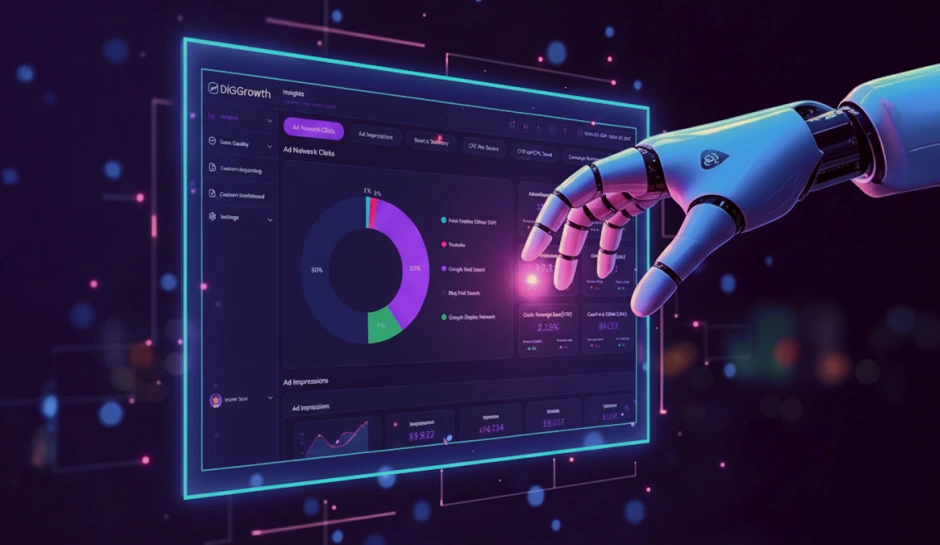
Facebook Ads Marketing: Strategies for Unparalleled Reach & Precision Targeting
Facebook Ads marketing has become essential for businesses of all sizes. With the ability to target specific demographics, interests, and behaviors, Facebook Ads offer a unique opportunity to reach potential customers where they already spend their time: social media. Whether you're looking to increase brand awareness, drive website traffic, or generate leads, Facebook Ads provide a cost-effective and highly targeted solution for achieving your marketing objectives. Read on to learn more about Facebook Ads Marketing
Competition for consumer attention is fierce. Organic reach on platforms like Facebook is steadily declining, making it increasingly difficult for businesses to see their message from the right audience. This presents a significant challenge for marketers: effectively targeting ideal customers and maximizing campaign impact.
Facebook Ads Marketing offers a powerful solution to this challenge. By leveraging its advanced targeting capabilities and diverse ad formats, businesses can strategically place their message in front of highly relevant audiences. This allows for unparalleled reach and engagement, leading to a significant boost in campaign performance.
Setting Clear-Ad Campaign Objectives
Delineating your ad campaign objectives is non-negotiable for a successful Facebook ads marketing strategy. Your objectives are the compass that guides your ads toward desired outcomes.
Common Campaign Objectives: Awareness, Consideration, Conversion
Facebook ad campaigns typically fall into three primary categories:
-
- Awareness:
The goal is to generate interest and buzz around your brand or product. You’re reaching out to people who will pay attention and remember your brand.
-
- Consideration:
Once aware, you target people contemplating a decision, enticing them to seek more information, engage with your content, or download your app.
-
- Conversion:
The final stage is about prompting action. Conversions can range from purchasing to signing up for a newsletter or filling out a contact form. This objective drives ROI directly.
Aligning Objectives with Overall Business Goals
Each campaign you run should map directly to your business objectives. Whether you aim to increase online sales, drive traffic to your website, or improve customer service through social interactions, your Facebook ad objectives must support these goals. Start by articulating what success looks like for your business and then work backward to define the campaign objective to support that success.
Using A/B Testing to Refine Objectives
Remember that your first choice in ad objective might not always be the most effective. Utilize A/B testing to experiment with different objectives and determine which results are best. You can pinpoint the most effective strategy to meet your business goals by testing various messages, designs, and calls to action. Data-driven decisions are key to refining your campaign objectives and, ultimately, scaling your efforts.
Creating Magnetic Creative Content for Facebook Ads
High-quality, engaging content is the cornerstone of successful Facebook ads marketing. Understanding how to captivate your audience through creative content is essential in standing out in a crowded news feed.
Content Formats That Resonate with the Facebook Audience
Leveraging the content formats they love most is vital to connect with your audience. This includes:
- Short, fast-paced videos that capture attention within seconds.
- Striking images that convey your message even with sound off.
- Compelling stories that chronicle real experiences or benefits.
Best Practices for Video, Image, and Text Content
When creating video content:
- Keep it brief but impactful. Most videos should be under 30 seconds.
- Focus on a strong opening to prevent quick scrolls past your ad.
- Use subtitles for viewers watching without sound.
For image content:
- Select high-resolution images that are visually appealing and relevant to your message.
- Employ minimal text on images to avoid clutter and ensure clarity.
For text content:
- Maintain a concise message with a clear call to action.
- Use language that speaks directly to the reader’s interests and pain points.
The Role of Storytelling in Ad Engagement
Storytelling is not just a buzzword; it’s a powerful tool for engaging with customers emotionally. By weaving a narrative related to your audience’s experiences, aspirations, or challenges, you create a bond that goes beyond the product. The result? Higher engagement rates and a stronger likelihood of ad recall.
Budgeting and Bidding Strategies for Effective Campaigns
Facebook’s ad auction system decides which ads to show to a particular audience at a given time. Unlike traditional auctions, it doesn’t merely favor the highest bidder. Instead, it considers factors such as ad relevance, bid amount, and user engagement to determine an ad’s ‘total value.’ Your goal should be to optimize these components to secure cost-efficient and effective ad placements.
Cost-effective Budgeting for Ad Campaigns
Finding the right balance in your ad budget is akin to walking a tightrope. Allocate too little, and your ad may need more traction. Overspend and you might exhaust your resources without adequate returns. Start by clearly understanding your customer lifetime value (CLV) and work backward to ascertain an ‘acceptable cost per acquisition’ (CPA). This will guide you in setting a budget that aligns with your business goals.
Tips for Smart Bidding and Getting the Best Value for Your Spend
-
- Define clear objectives:
Are you aiming for clicks, impressions, or conversions?
-
- Use automatic bidding:
If you’re new to Facebook advertising or want to save time, let Facebook’s algorithms optimize your bid for each auction with its Automatic Bidding feature.
-
- Consider manual bidding:
For seasoned advertisers seeking more control, Manual Bidding allows you to set maximum bid amounts for your desired outcome.
-
- Test and iterate:
Start with a small budget to test different bidding strategies and scale up once you’ve identified what works best for your campaign.
-
- Analyze and adjust:
Monitor your campaign’s performance and adjust bids based on the day of the week, time of day, and audience behavior patterns.
Pro Tip- When budgeting for Facebook ad campaigns, aim for cost-efficient placements by understanding your customer lifetime value (CLV) and setting an acceptable cost per acquisition (CPA). Use automatic bidding for simplicity or manual bidding for control, and continuously test, analyze, and adjust your strategies for optimal results.
Improving Ad Performance through Testing and A/B Split Testing
Facebook ad marketing requires a continuous effort to optimize and enhance ad performance. A critical component in this process is rigorous testing. If you’re not testing, you’re not improving. Testing and A/B split testing allow you to make data-driven decisions that can significantly increase the ROI of your campaigns.
The Importance of Ad Testing for Optimization
- Ad testing is crucial for optimizing your ad campaigns.
- Without testing, you’re gambling with your ad spend.
- A/B split tests reveal what resonates best with your audience.
- Elements like headlines, images, and calls to action can all be optimized for improved performance.
How to Structure A/B Tests for Actionable Insights
Structuring A/B tests properly is key to obtaining actionable insights. Here’s how you can structure your tests:
- Test one variable at a time to determine its impact.
- Use a significant sample size to ensure statistical relevance.
- Run your test for an adequate period to account for variability in days or times.
Analyzing A/B Test Results to Improve Ad Performance
Once your A/B tests are complete, it’s crucial to analyze the results. Look beyond just the click-through rates or impressions. Determine why one variation outperforms the other and apply these insights to future campaigns.
Ultimately, improving your Facebook ads through testing isn’t just about finding what works—it’s about understanding why it works and leveraging that knowledge to refine and improve your marketing strategy consistently.
Measuring Success: Performance Metrics and KPIs
Understanding the effectiveness of your Facebook Ads is crucial to refining your marketing strategy and ensuring the highest possible return on investment. By closely monitoring key performance metrics and KPIs (Key Performance Indicators), you can gauge the impact of your ads, optimize your campaigns, and ultimately drive better business results. Here are some essential aspects of measuring success in Facebook ads marketing.
Understanding and Using Facebook’s Ad Manager for Analytics
Facebook’s Ad Manager is a robust tool that offers comprehensive analytics to track your campaign’s performance. It enables you to monitor all vital KPIs in real time, making it easier to make informed decisions and adjustments. With Ad Manager’s detailed breakdowns, you can analyze your ads’ effectiveness across different demographics, devices, and placements to understand which factors drive success.
When and How to Pivot Based on Performance Metrics
Monitoring your campaigns actively lets you pinpoint when your ads are not performing as expected. When certain KPIs fall short of your targets, it’s time to analyze the data, understand the underlying causes, and pivot your strategy. Whether adjusting your creative content, refining your target audience, or reallocating your budget – data-driven decisions can significantly enhance your campaign’s performance. Look for patterns, test different variables, and remain adaptable to transform insights into actionable improvements for your Facebook ads marketing.
Advanced Ad Optimization Techniques
Leverage advanced ad optimization techniques to take your Facebook ads marketing to the next level. These methods are designed to tweak your campaigns and transform their performance, delivering significant engagement and conversion impacts.
Enhancing Ad Engagement Tactics
Engagement in your ads signals relevance and resonates deeply with audiences. To boost interaction:
-
- Use High-Quality Visuals:
Invest in professional images and video content that captures attention within the first few seconds.
-
- Refine Copy:
Craft compelling ad copy that speaks directly to your target audience’s pain points and desires.
-
- Include Clear Call-to-Actions (CTAs):
Clear CTAs guide users to the next step, increasing the likelihood of taking the desired action.
Optimizing Ad Delivery and Targeting
Effective delivery and targeting are key to reaching the right users at the right time. To optimize:
-
- Lookalike Audiences:
Use existing customer data to find new users who share characteristics similar to those of your best customers.
-
- Custom Audiences:
Segment your audiences based on their interaction with your brand and personalize ads to increase relevance.
-
- Placement Refinement:
Analyze performance data to identify which platforms and devices yield the best results and focus your spending there.
Maximize Your ROI with Retargeting and Remarketing on Facebook
Retargeting on Facebook is a critical strategy for marketers to boost their conversion rates and foster customer loyalty. It keeps your brand top of mind and promotes repeated engagement by targeting individuals who have already expressed interest in your products or visited your site.
The Value of Retargeting in Increasing Conversions
Facebook allows advertisers to re-engage with potential customers who may not have purchased during their first visit. This increases the likelihood of conversion and maximizes the return on investment of your ad spend by targeting users who are already familiar with what you offer. Effective retargeting can transform one-time visitors into loyal customers.
Setting Up Effective Retargeting Campaigns
To establish a successful retargeting campaign, you must install and utilize the Facebook Pixel on your website to track user behavior. This enables you to create custom audiences based on specific site interactions, such as visiting a product page or adding an item to the cart. With these insights, you can tailor your ads to match the users’ interests and increase relevancy, a key driver of engagement and conversions.
Best Practices for Remarketing to Past Website Visitors and Customers
-
- Segment your audiences:
Use data to create segmented lists such as cart abandoners, frequent visitors, or past purchasers for more personalized campaigns.
-
- Tailor your messaging:
Customize your ad copy and creative to reflect each audience segment’s unique concerns or interests.
-
- Test and optimize:
Continuously A/B test different ad elements with your retargeted audience to determine which resonates best and leads to higher conversion rates.
-
- Control the frequency:
Limit how often users see your ads to avoid ad fatigue and maintain a positive brand perception.
-
- Offer incentives:
Provide special offers or discounts to encourage past visitors to take the desired action.
Mastering Conversion Tracking with Facebook Pixel
The Facebook Pixel is a piece of code you install on your website, which allows you to measure the effectiveness of your advertising by understanding the actions users take on your site. With Pixel, you can:
- Track conversions from Facebook ads
- Optimize ads based on collected data.
- Build targeted audiences for future ads.
- Remarket to individuals who have already taken some form of action on your site
Step-by-Step Guide to Implementing Facebook Pixel
Setting up Facebook Pixel involves a few detailed steps that can significantly impact your ad campaigns:
- Create your Pixel in Facebook Ads Manager.
- Install the Pixel code on your website header.
- Verify that the Pixel is firing correctly using the Facebook Pixel Helper.
- Set up conversion tracking by defining specific events on your website.
Once installed, Pixel will start collecting data, allowing for more accurate tracking and targeting.
Utilizing Conversion Tracking Data to Inform Campaign Tweaks
Data collected through Facebook Pixel should be the cornerstone of your campaign refinement process. Analyzing the data lets you identify which parts of your funnel need adjustment. Use this conversion tracking data to:
- Analyze customer paths and conversion sequences
- Test different ad creatives and placement to improve performance
- Adjust your targeting options based on real conversion trends
- Allocate more budget to high-performing ads to maximize efficiency
Incorporating these insights into your Facebook ads marketing strategy can drastically improve your campaigns’ effectiveness, ensuring that your ad spend contributes to tangible business outcomes.
The Role of Facebook Business Manager in Ad Management
Facebook Business Manager acts as a command center for your advertising activities on the platform. It provides a centralized space to track ad performance, access detailed reports, and manage assets such as pages and accounts. With the ability to oversee multiple ad campaigns simultaneously, it saves time. It increases efficiency, allowing marketers to focus on strategy and optimization.
Advantages of using Business Manager for ad campaigns
-
- Control and Security:
The business Manager ensures that your business assets are kept secure, giving you full control over who can access your ad accounts and pages.
-
- Collaboration:
It simplifies collaboration by enabling seamless communication across team members and stakeholders in the ad campaign.
-
- Insightful Analytics:
Gain deeper insights with comprehensive analytics tools that help make data-driven decisions to improve your ad performance.
Integrating team members and assigning roles within the platform
Facebook Business Manager is tailor-made for teamwork. It allows you to easily integrate team members and assign them specific roles and permissions, ensuring that the right person handles every task. This functionality not only secures your company’s data but also augments each team member’s ability to perform their role efficiently within your Facebook ads marketing strategy.
Leveraging Integration with Instagram Advertising
Using Facebook and Instagram for your advertising campaigns lets you tap into diverse but complementary audiences. The visual nature of Instagram complements the comprehensive targeting options available on Facebook, creating a robust approach for engaging with your target demographic across different touchpoints.
How to Create Cohesive Campaigns across Facebook and Instagram
Creating campaigns that work harmoniously across Facebook and Instagram involves more than just repurposing content. It requires a strategic approach:
-
- Consistency in Messaging:
Ensure that your campaign’s core message is consistent, but tailor the creative to fit each platform’s unique characteristics and user preferences.
-
- Creative Adaptation:
Adapt your visuals and copies to the format that performs best on each platform, such as stories for Instagram and newsfeed posts for Facebook.
-
- Targeting Synergy:
Use the interconnected targeting capabilities to synchronize your audience targeting across both platforms, maximizing the potential for customer engagement.
Case Study: DiGGrowth’s Transformation of a Leading Organic Skincare Brand’s Social Media Strategy
Client Overview:
A prominent organic skincare brand renowned for its commitment to natural ingredients and sustainability sought to amplify its online presence and engagement.
Challenge:
The brand faced challenges in maximizing the impact of its social media efforts across platforms like Facebook and Instagram. Despite having a loyal customer base, they needed help translating this into online engagement and conversions.
Solution:
DiGGrowth, a digital marketing agency specializing in social media optimization, was engaged to revamp the brand’s social media strategy. Recognizing the potential of integrated campaigns, DiGGrowth devised a comprehensive approach that leveraged Facebook and Instagram’s unique strengths.
Implementation:
DiGGrowth began by thoroughly analyzing the brand’s social media presence, audience demographics, and competitor landscape. Based on these insights, they developed a tailored strategy focused on cross-platform synergy.
The team implemented a series of targeted Facebook and Instagram ad campaigns, each meticulously crafted to resonate with the brand’s audience. Utilizing compelling visuals, engaging copy, and strategic targeting, DiGGrowth ensured maximum impact across both platforms.
Results:
The results of DiGGrowth’s intervention were nothing short of transformative for the organic skincare brand:
-
- Increased Conversion Rates:
By refining ad targeting and messaging, DiGGrowth achieved a significant uplift in conversion rates, driving more leads and sales for the brand.
-
- Heightened Engagement:
Through captivating content and interactive ad formats, DiGGrowth successfully enhanced engagement levels, fostering a deeper connection with the brand’s audience.
-
- Elevated Brand Recognition:
Consistent branding and messaging across Facebook and Instagram contributed to heightened brand visibility and recognition, solidifying the brand’s position in the market.
Conclusion:
DiGGrowth’s strategic approach to social media optimization proved instrumental in unlocking the full potential of the organic skincare brand’s online presence. By seamlessly integrating Facebook and Instagram campaigns, DiGGrowth empowered the brand to achieve unprecedented engagement, conversion, and brand recognition, setting a new benchmark for social media success.
In some cases, machine learning models create or exacerbate social problems. For example, Facebook has used machine learning as a tool to show users ads and content that will interest and engage them — which has led to models showing people extreme content that leads to polarization and the spread of conspiracy theories when people are shown incendiary, partisan, or inaccurate content.
– MIT Sloan
Key Takeaways
- Prioritize understanding your audience’s preferences and behaviors to tailor your Facebook Ads effectively.
- Define clear objectives for your campaigns to maximize their impact and track their success.
- Stay updated with Facebook’s ever-changing landscape and continuously refine your strategies based on performance metrics and industry trends.
- View your Facebook Ads campaign as a comprehensive system, optimizing each component from budgeting to advanced techniques like retargeting.
Conclusion
As we conclude our exploration of Facebook Ads marketing strategies, remember that success lies in mastering the art of strategic planning, audience understanding, and continuous optimization. Apply the insights shared in this guide to refine your approach and achieve sustainable growth. Stay updated with platform changes, utilize tools like Facebook Business Manager, and don’t hesitate to seek professional assistance to maximize your results. Dedication and strategic implementation can elevate your Facebook Ads marketing and propel your business to new heights.
To stay updated with the latest trends and receive expert guidance tailored to your needs Talk to Us!
Don’t hesitate to reach out to us at info@diggrowth.com and we’ll get back to you.
Ready to get started?
Increase your marketing ROI by 30% with custom dashboards & reports that present a clear picture of marketing effectiveness
Start Free Trial
Experience Premium Marketing Analytics At Budget-Friendly Pricing.

Learn how you can accurately measure return on marketing investment.
Additional Resources
How Predictive AI Will Transform Paid Media Strategy in 2026
Paid media isn’t a channel game anymore, it’s...
Read full post postDon’t Let AI Break Your Brand: What Every CMO Should Know
AI isn’t just another marketing tool. It’s changing...
Read full post postFrom Demos to Deployment: Why MCP Is the Foundation of Agentic AI
A quiet revolution is unfolding in AI. And...
Read full post postFAQ's
Prioritize understanding your audience's preferences, behaviors, and pain points to tailor your ads effectively.
Set clear, measurable objectives aligned with your business goals, whether it's increasing brand awareness, driving conversions, or boosting engagement.
Stay informed about platform updates, industry trends, and best practices through resources like official announcements, industry blogs, and webinars.
Consider seeking professional guidance if facing challenges in strategy development, campaign optimization, or staying abreast of platform changes. Expert support can accelerate your growth and maximize your results.


